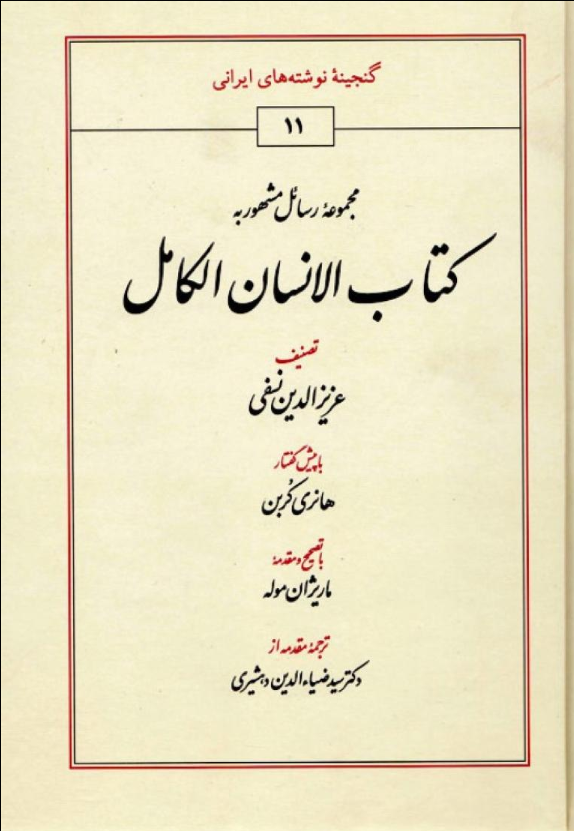The thinker who wrote the encyclopedia of the “Perfect Man” in the 13th century
🔴 The great thinker at the Center of Islamic Civilization
🔴 A source of knowledge, morality, and spiritual elevation
 Among the thinkers whose works are planned to be featured in the exhibition of the Center of Islamic Civilization in Uzbekistan is Azizuddin Nasafi. The Center’s main mission is to collect the rich Islamic and spiritual heritage formed on the territory of our country, to study it on a scientific basis, and to present it to the world community through modern means. Nasafi is one of the heirs of this heritage, remembered in history as a scholar who, in the 13th century, explained complex Sufi ideas in a simple and fluent language.
Among the thinkers whose works are planned to be featured in the exhibition of the Center of Islamic Civilization in Uzbekistan is Azizuddin Nasafi. The Center’s main mission is to collect the rich Islamic and spiritual heritage formed on the territory of our country, to study it on a scientific basis, and to present it to the world community through modern means. Nasafi is one of the heirs of this heritage, remembered in history as a scholar who, in the 13th century, explained complex Sufi ideas in a simple and fluent language.
Life journey
Azizuddin Nasafi was born in the ancient city of Nasaf today’s Qarshi in Transoxiana. He grew up in an environment where science and spiritual life flourished, deeply immersing himself in Sufi teachings. According to historical sources, in 1273, when political unrest arose around Bukhara, Nasafi crossed the Amu Darya and moved toward Khorasan. Later, he lived in Kerman, Isfahan, and Shiraz, eventually residing for a long time in the city of Abarquh in Iran. It was there, in 1281, that he completed his famous work Kashf al-Ḥaqāʾiq. Manuscripts indicate that even in 1292 he continued to write in Abarquh.
Nasafi was in contact with the renowned Kubrawiyya Sufi master Sa’d al-Dīn Ḥamawī, whose influence is visible in his writings. Some sources even note that in a dream, the Prophet and great sheikhs appeared to Nasafi, advising him not to reveal all the ideas of Kashf al-Ḥaqāʾiq at once. This event reflects his intention to convey complex esoteric views in a language accessible to the people.
Works and their dissemination
Nasafi compiled his legacy in numerous treatises. His most famous work is known as Insān al-Kāmil (“The Perfect Man”). In addition, his Kashf al-Ḥaqāʾiq, Maqṣad al-Aqṣā, and Bayān al-Tanzīl also hold an important place in the history of Sufism.
His books began to spread widely from the 15th century onwards. Manuscripts were copied and circulated across Central Asia, Khorasan, Iran, and the Ottoman Empire. From the 16th century, some were translated into Turkish. By the 17th century, Nasafi’s name reached Europe: in 1665, excerpts from Maqṣad al-Aqṣā were published in Latin. In 1867, the English orientalist Edward Palmer published quotations from his works in English. In the 20th century, scholars such as Marijan Mole and Fritz Meier conducted academic analyses of his texts. More recently, the English researcher Lloyd Ridgeon has published selected parts of Nasafi’s works in English.
Ideas
 At the heart of Nasafi’s legacy lies the concept of the “Perfect Man.” According to him, a person comes to know himself and the universe through knowledge, disciplines his ego through moral purification, and approaches the Truth through spiritual elevation. This process unfolds step by step, leading the human being toward perfection.
At the heart of Nasafi’s legacy lies the concept of the “Perfect Man.” According to him, a person comes to know himself and the universe through knowledge, disciplines his ego through moral purification, and approaches the Truth through spiritual elevation. This process unfolds step by step, leading the human being toward perfection.
The scholar also elaborates on the relationship between sainthood (walāya) and prophethood (nubuwwa). He emphasizes that those who follow the spiritual path rise to varying degrees of knowledge and status. Nasafi advanced the views of ahl al-waḥda the people of unity asserting that all humanity draws nourishment from a single spiritual source.
A distinctive feature of Nasafi’s writings is his ability to explain complex philosophical concepts through practical examples and simple expressions. For this reason, his works were comprehensible even to the wider public.
Conclusion
Azizuddin Nasafi was a prominent Sufi thinker of the 13th century. Born in Transoxiana, he created his works in the cities of Khorasan and Iran. Through treatises such as Kashf al-Ḥaqāʾiq and Maqṣad al-Aqṣā, he expressed complex ideas in a clear style and spread the doctrine of the Perfect Man. His works significantly influenced intellectual traditions not only in the Muslim East but also in Europe, both during his time and in later centuries.
Today, the inclusion of Nasafi’s heritage in the exhibition of the Center of Islamic Civilization is no coincidence. His ideas not only illuminate the past but also hold great relevance for the present generation: they call young people to knowledge, morality, and spiritual refinement. For this reason, studying and promoting Nasafi’s legacy is valued as an integral part of our national spirituality.
Husan Tursunov
P/S: The article may be used by citing the official website of the Center.
Most read

Over 100 experts from more than 20 countries of the world are in Tashkent!

The Center for Islamic Civilization – a global platform leading towards enlightenment

The museum of the Center for Islamic Civilization in Uzbekistan has been further enriched: unique artifacts from different parts of the world have been presented as gifts











